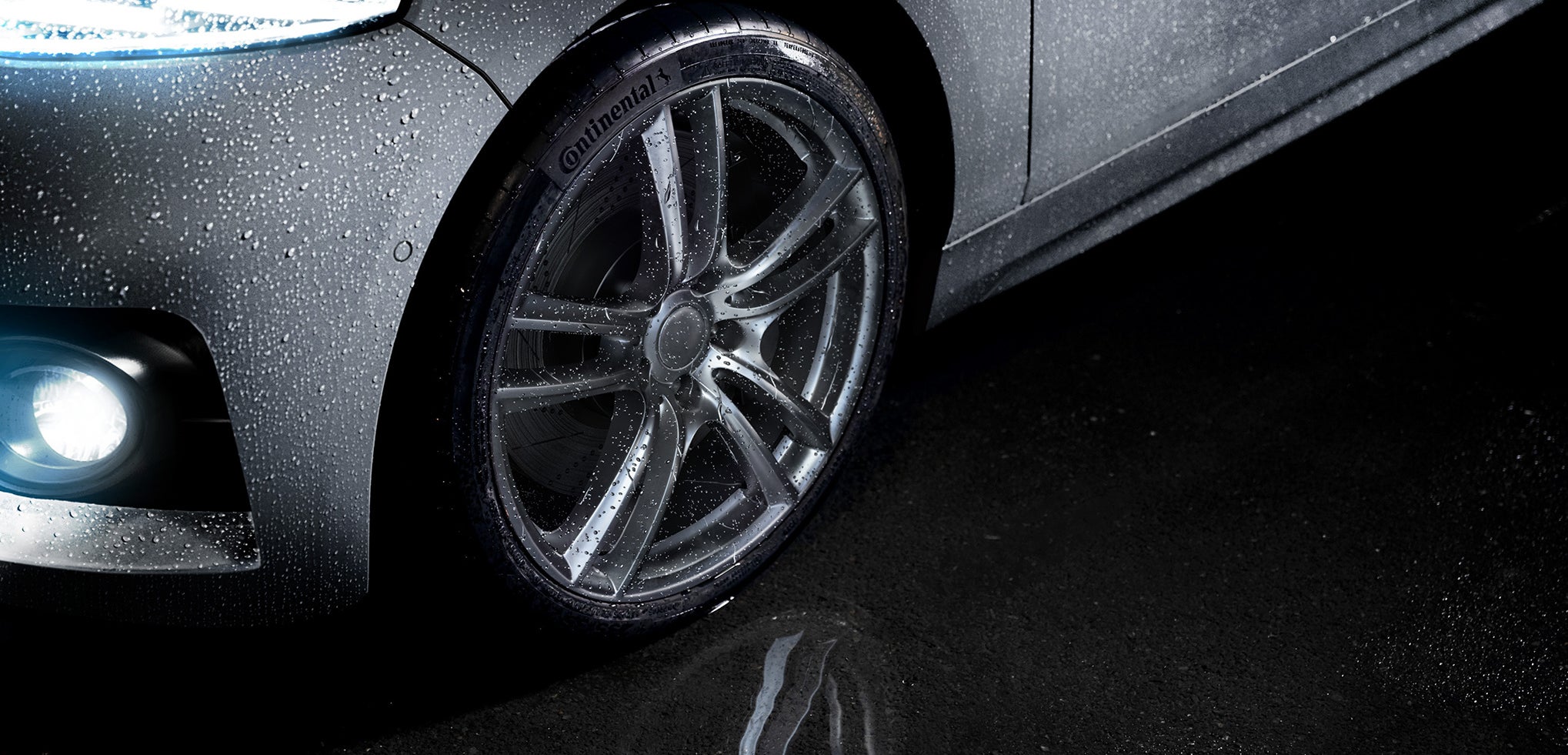
#Winter World
Buying winter tyres
Winter tyres are a solid investment for winter weather
So, you're ready to buy some winter tyres for your car. Congratulations. If you live in a region where the temperature falls below 7 degrees each season, it is a very sensible decision to ensure safety for yourself and other users on the road. Winter tyres have unique attributes that mitigate the risks of snow, ice, and falling temperatures on the road, providing motorists with greater control behind the wheel.
Now that you've decided to move forward, let's conduct a bit of research. When investing in a set of winter tyres, for example, you must put them on all four wheel positions of your car. It will maximise handling of the vehicle and mitigate the risk of losing traction on either the rear or front axle when driving on slippery roads. Do not mix summer tyres and winter tyres on passenger cars.
Here are some more useful things to consider before you choose a new set of winter tyres.

Why winter tyres are more effective when it gets colder
The defining characteristics of a good winter tyre are the tread pattern the sipes, and the tyre compound. When the weather starts to get cold, and there's ice on the roads, these tyres are ready to tackle the elements.
Winter tyres have a dedicated tread pattern to provide superior traction on snowy, wet, and icy roads. The rotation of the wheel will push the snow into the broader grooves and generate additional traction. The tread also features sipes – tiny little slots – that provide additional traction by enabling the tread blocks to flex and dig deeper into the snow or ice.
Finally, the tyre compound has a higher percentage of natural rubber, so it remains soft and flexible in cold temperatures. If the tyre compound isn't designed to perform in winter conditions – as is the case in a summer tyre – it will go hard and brittle. That, in turn, leads to a substantial decline in traction and grip.
Winter tyre sidewall markings
You can identify winter tyres by one of two symbols on the sidewall. These are the M+S symbol and the three-peak mountain snowflake (3PMSF) symbol, and both are industry standards. So far, the well-known M+S mark was sufficient as a winter tyre label. The 3PMSF symbol (snowflake) is mandatory for winter or all-weather tyres produced since January 1, 2018.
Until September 30, 2024, there is a transition period in which winter tyres with M+S labeling that have already been manufactured still meet the winter tyre requirement.
However, it is definitely advisable to convert to new winter tyres with the 3PMSF symbol (snowflake) soon, as they have to prove their quality in a standardised brake test on snow. This was not yet necessary for the M+S winter tyre marking.
1. M+S symbol
Tyres with the M+S symbol have a tread pattern, tread compound or structure that is engineered to deliver better performance in snow conditions than a regular tyre, especially in terms of its ability to initiate or maintain vehicle motion.
2. Three-Peak Mountain Snowflake symbol
The three-peak mountain snowflake symbol is a more stringent certification that identifies winter tyres according to UNECE regulations (valid in the EU and various other countries) and the tyre regulations of the USA and Canada. The snow performance of these winter tyres is proven by objective tests to meet or exceed defined limits. These tyres provide high performance in terms of safety and control on snow, on icy roads, and in general at low temperatures.
Winter tyre size and pressure
When buying a new set of winter tyres for your vehicle, be sure to check the size specifications as provided by the manufacturer. These details can be found in the owner's handbook, the door frame on the driver's side, or under the fuel cap. To keep things simpler, using the same tyre size as the original equipment (OE) tyres is the best course of action.
For winter tyres, the recommended tyre pressure in PSI is the same as for summer tyres. Again, you can consult the owner's handbook, the driver's side door frame, or under the fuel cap for this information. You cannot avoid fluctuations in air pressure; for every drop in 10 degrees in air temperature, the tyres will drop one PSI.
The important thing is to monitor your tyre pressure every two to four weeks and top it up as necessary. Driving with under-inflated tyres impacts fuel economy and treadwear, and could even lead to a puncture.
Related content
-
 2024/01/10Driving in heavy rainDriving a car in the rain is much more challenging than driving in fine weather. Follow these safety tips for driving in wet conditions.Read more
2024/01/10Driving in heavy rainDriving a car in the rain is much more challenging than driving in fine weather. Follow these safety tips for driving in wet conditions.Read more -
 2023/07/05Tyre damagesTires can become damaged, and it can happen without the driver realizing there's an issue. We explain the signs and symptoms to help diagnose the problem.Read more
2023/07/05Tyre damagesTires can become damaged, and it can happen without the driver realizing there's an issue. We explain the signs and symptoms to help diagnose the problem.Read more -
 2024/01/10How to change a tyreWhether it’s an emergency puncture situation or you’re switching your seasonal set – here’s your step-by-step guide to changing a tire.Read more
2024/01/10How to change a tyreWhether it’s an emergency puncture situation or you’re switching your seasonal set – here’s your step-by-step guide to changing a tire.Read more
What´s happening on social media right now